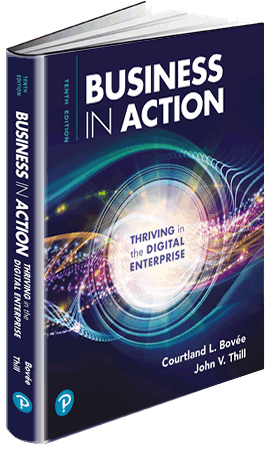Introduction to Business Textbooks
Learn about the new leader in the field and the most current text on the market that
includes easy-to-understand coverage of artificial intelligence. Read More
Copyright © 2018-2019 by St. Evangelista Inc. All rights reserved.

 Business in Action, 10th Edition
Business in Action, 10th Edition